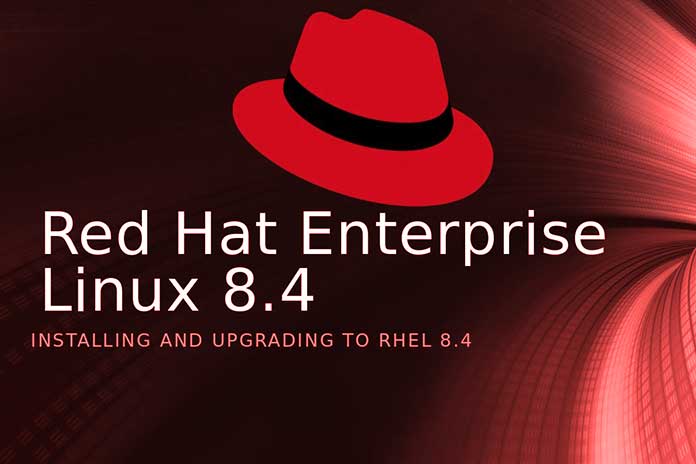Red Hat advances Red Hat Enterprise Linux as a strong starting point for the open crossover cloud, from the data center to the edge. With Red Hat Enterprise Linux 8.4, the seller needs to refine the stage’s job as a lightweight, creating the working framework for edge organizations by adding new Linux compartments and the board capacities given edge figuring needs. As per Red Hat’s The State of Enterprise Open Source report, 72% of IT pioneers reviewed anticipate that open source should drive edge registering reception throughout the following two years.
The Linux Foundation’s 2021 State of the Edge predicts that by 2025, the Internet-of-Things ( IoT ) or edge-bound gadgets will create around 90 zettabytes of information. For Red Hat, this demonstrates that the significance of edge processing as an open half-breed cloud impression will fill in the years to come, doing the groundwork for edge registering, a basic need for CIOs and IT pioneers. Red Hat Enterprise Linux frames the creation starting point for Fortune 500 organizations all over the planet, from worldwide monetary establishments and medical care frameworks to assembling organizations and state-run administrations.
The stage consolidates more important consistency and control of the half and half cloud conditions with the capacity to embrace open development step by step or at the same time. It is safer and more dependable to build the certainty of arrangements. With the new capacities of Red Hat Enterprise Linux 8.4, the organization stretches out these abilities to edge arrangements. Red Hat Enterprise Linux is intended to be the establishment for the Red Hat Edge drive, which plans to convey the abilities of Red Hat’s open crossover cloud portfolio to edge applications across ventures from broadcast communications and transportation to brilliant vehicles to gadgets business.
Red Hat’s complete setup of open advances assembles an edge-prepared innovation stack, which incorporates Red Hat Enterprise Linux and: Red Hat OpenShift, which currently includes support for 3-hub bunches and far-off hubs, making arrangement conceivable the Kubernetes corporate stage in places with restricted space or assets; Red Hat Advanced Cluster Management for Kubernetes which conveys robust and adaptable Kubernetes the board abilities in the open cross breed cloud and broadens concentrated IT control from the data center to the edge of the organization.
Red Hat Ansible Automation Platform to assist with robotizing programming stack upkeep work processes tense gadgets; Red Hat Integration to associate applications and information across edge organizations and the open half and half cloud; Edge organizations frequently depend vigorously on Linux holders to make it simpler to assemble, send, and keep up with responsibilities in various areas. Red Hat Enterprise Linux 8.4 keeps up with normalization and control through these pictures, beginning with updates to Podman, Red Hat Enterprise Linux’s open guidelines-based holder motor.
Podman empowers compartment executives across the empty half and half cloud from a solitary essential issue, whether they run in the data center or a far-off area, and offers the capacity to refresh holders, making it more straightforward to keep up with edge containerized jobs running accurately and more securely. Red Hat Enterprise Linux 8.4 adds new usefulness to Image Builder, a device that makes custom working framework pictures that can be sent for various purposes. For edge figuring jobs, Image Builder presently upholds building custom establishments for bare metal, helping IT groups keep a typical establishment across different edge conditions.
Red Hat Universal Base Image (UBI), the Red Hat Enterprise Linux client space content that can run inside holders, has additionally been upgraded. UBI permits holders to keep up with similar creation qualities as Red Hat Enterprise Linux, including more critical security and proficiency, at the application level. UBI is presently accessible in a lightweight (miniature) picture for edge figuring, making it ideal for building redistributable, normalized Linux-based cloud-local applications without the above of a whole bit circulation. Red Hat Enterprise Linux 8.4 is something beyond an edge base.
The most recent arrival of the Enterprise Linux stage adds better than ever abilities to assist associations with creating, executing, and keeping up with half and half cloud systems, from the datacenter to the cloud. Other key highlights include: expanded adaptability for cloud-based applications with an all-encompassing perspective on membership conveyance and detailing through Red Hat Insights Subscriptions, as well as broadened help for Red Hat Cloud Access; Simplified and computerized framework setup and the board through the Tracer utility and Red Hat Enterprise Linux Web Console refreshes, which give savvy direction to framework fixes and updates to recognize personal time because of administration reboots o of the framework.
Extensive security capacities intended to address the issues of IT associations with Red Hat Enterprise Linux System Role for Crypto Policies and Network-Bound Disk Encryption (NBDE) conveyed as a holder in dispersed conditions. Red Hat Enterprise Linux 8.4 additionally profits by robust new options to Red Hat Insights, Red Hat’s proactive administration offering, to assist with reinforcing IT security, framework examination, and the board of Red Hat Enterprise Linux frameworks. Red Hat Insights is accessible naturally with all dynamic Red Hat Enterprise Linux, Red Hat OpenShift, and Red Hat Automation Platform memberships.


